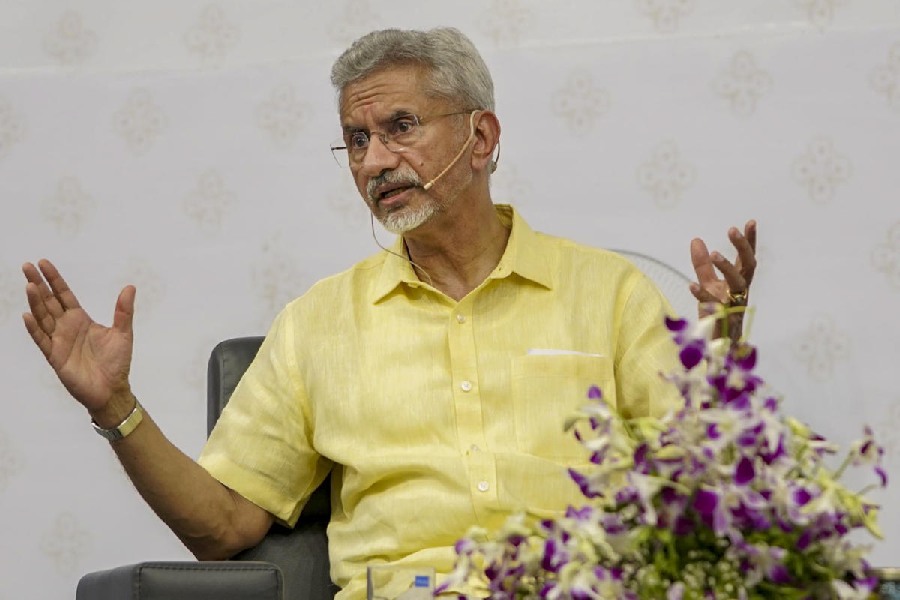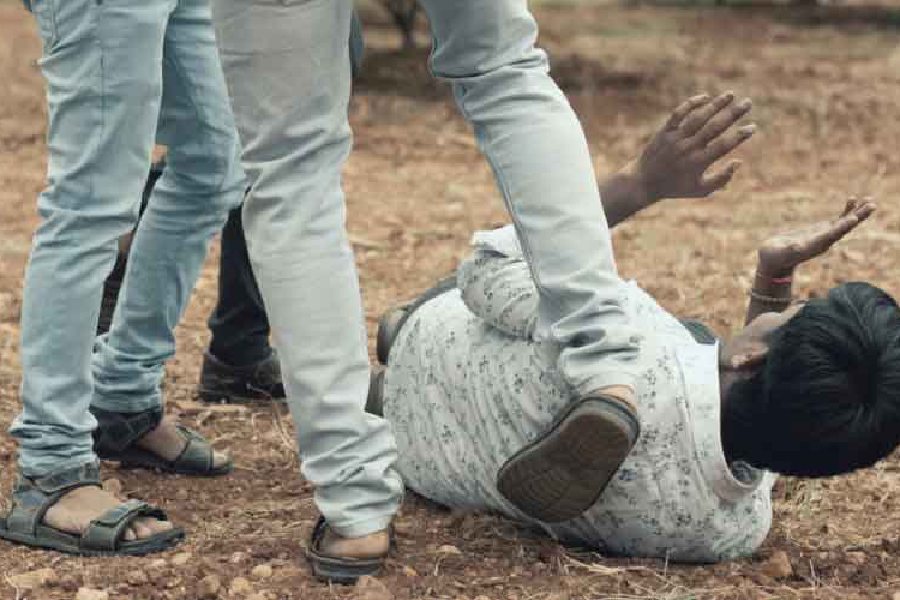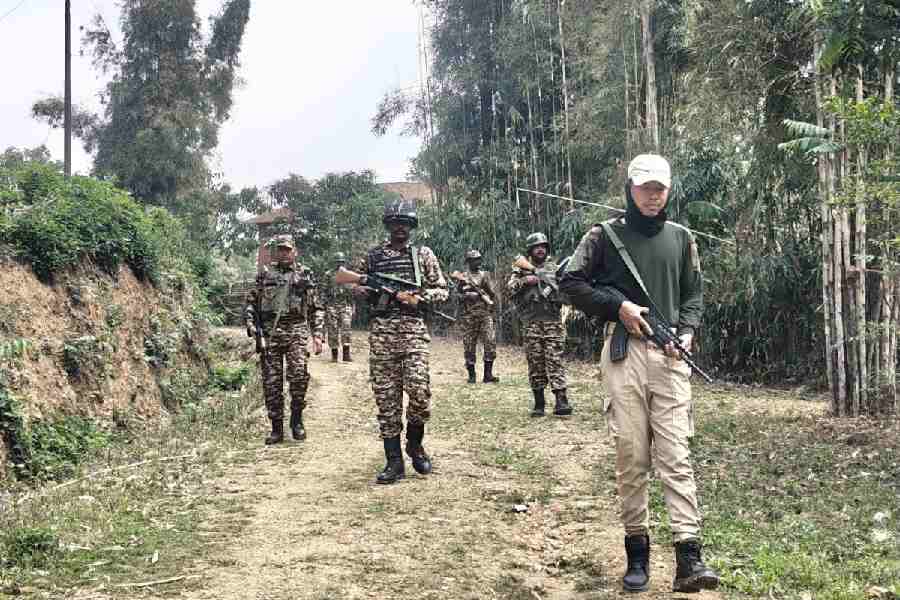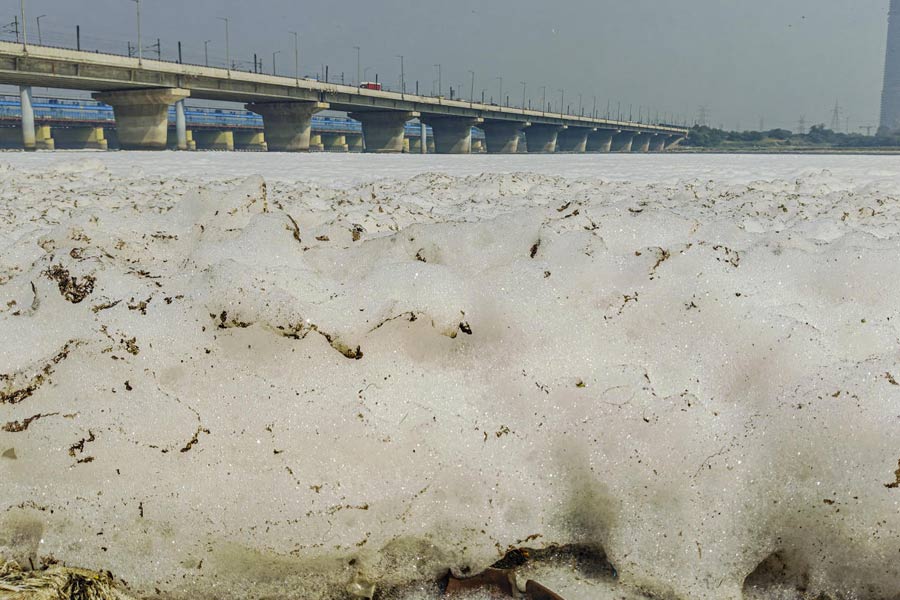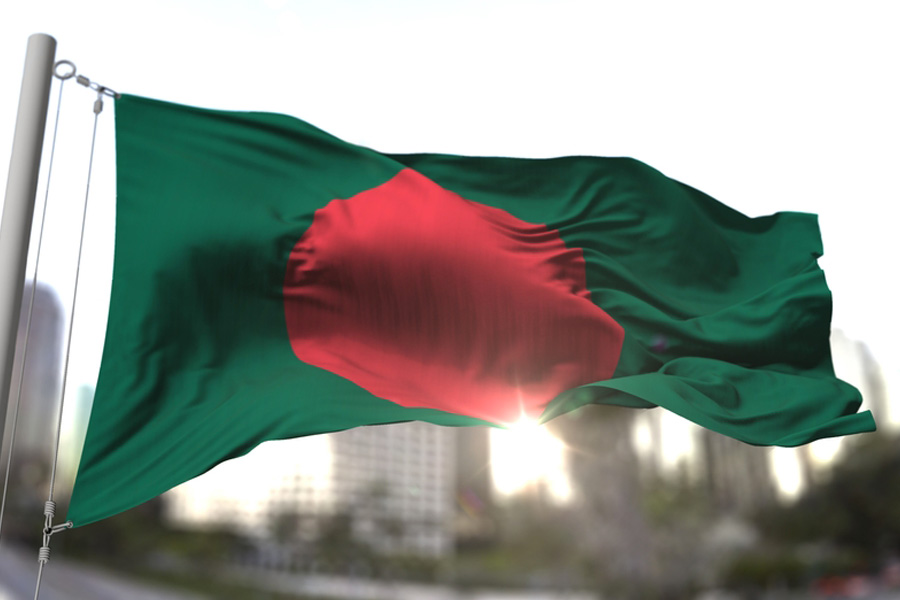 |
| Bikash Sinha with Soumitra Chatterjee at the launch of a collection of his essays at Starmark, South City Mall. Picture by Sanat Kumar Sinha |
In between writing research papers and fulfilling his duties as director of the Saha Institute of Nuclear Physics and Variable Energy Cyclotron Centre, physicist Bikash Sinha has penned essays on a range of topics that have been published in Anandabazar Patrika and Desh. Ananda Publishers has come up with a compendium of these essays, Sristi o Kristi — Bandhanhin Granthi.
Soumitra Chatterjee, who attended the launch of the book at Starmark, South City Mall, on Wednesday, described the essays as “attractive” and lamented the fact that books on science were rarely written in a style that would win over lay readers. Only someone with a good grasp of both science and literature can communicate his thoughts with as much lucidity and beauty, the actor said. Referring to Jagadish Chandra Bose’s poem Nadi tumi kotha hote ashiacho and his friendship with Rabindranath Tagore, Chatterjee rued the trend of artists and scientists not collaborating closely.
The desire to establish a synergy between science and the arts is easy to see in most of the essays in Sinha’s book. He believes that interaction between artists and scientists is natural and mutually beneficial.
Bandhanhin Granthi is the title of his essay on Rabindranath Tagore and Acharya Jagadish Chandra Bose — their long friendship provided inspiration and encouragement to both. In the preface to Visva Parichay (which he dedicated to another scientist, Satyendra Nath Bose), Tagore wrote: “I am not a scientist, but from childhood my strong desire to enjoy the rasa of science knew no bounds.” In Jagadish Chandra, Tagore had discovered a corresponding thirst for the arts. Sinha writes of the way Jagadish Chandra demanded to hear a new short story and songs from Tagore every evening during his weekend stay at Shilaidaha and how Tagore took up the cause of arranging finance for his friend’s research.
Visva-Bharati vice-chancellor Sushanta Duttagupta, Sinha’s friend and colleague from the world of science, said at the launch that he found in the book an echo of the disappointment he himself felt on his return to India after higher studies abroad, and pain at the moral decline of society and its refusal to allow radical changes for the better, like setting up nuclear power plants.
Scientist Srikumar Banerjee said the book would inspire people to seek further.
Apart from personal anecdotes and forays into philosophy, the book contains essays on Higgs Boson, Quark Gluon Plasma, Einstein, Meghnad Saha and Satyendra Nath Bose.
Sinha ended the launch by reading out a poem he had written, Tumi ki sudhui kona? He also paid a tribute to Sunil Gangopadhyay and his deep interest in science.
Lost river
The Yuletide spirit, childhood memories and lost rivers, the launch of Prititosh Roy’s Harano Nadir Itikotha, was about all that and more.
The book, published by Codex, was released at Calcutta Club on December 24 in the presence of Pallab Sengupta, president, Asiatic Society, Calcutta, former state environment minister Manab Mukherjee, and former vice-chancellor of North Bengal University, Piyush Kanti Saha.
 |
| Writer Prititosh Roy with (right) former minister Manab Mukherjee at Calcutta Club. Picture by Rashbehari Das |
The harano nadi or the lost river of this book is Adi Ganga or Tolly’s Nullah on the banks of which the author had spent much of his childhood. He became an electrical engineer but retained his interest in the study of rivers.
Saha said: “Prititosh and I are childhood friends. As kids, we would stand near the lockgate of Tolly’s Nullah, watching boats. If we had preserved the water body better, our city would have dealt with water scarcity better.”
Chief guest Sengupta said he too was born in a locality near Tolly’s Nullah and so the book brought back many memories. “This book is a great mix of history, folk tale, river science, geography and literature. That makes it an interesting read,” he added.
Mukherjee said it was natural for some rivers to dry up or disappear. “But now we are not giving nature time to re-create,” he said. He explained how water is becoming a commodity and river water is increasingly getting commercialised.
The writer warned that rivers like the Yamuna, Vidyadhari and the Ichamati need our immediate attention and also spoke about the arsenic problem.
“I know the Adi Ganga cannot be revived, but we must not repeat the same mistake,” he said. He went on to list the advantages of controlled floods and river training. He offered a solution too. “If we connect the Piyali river to Tolly’s Nullah, it might benefit us,” he said.
Saha pointed out how Tolly’s Nullah, which was once used for trade, had become just a sewerage channel. “I feel sad that we have not been able to preserve it better. Though I am not a pessimist I think we are losing a lot because of our attitude and greed,” he said.
(Contributed by Sebanti Sarkar and Chandreyee Ghose)


